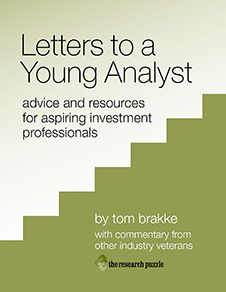
- Friday, April 17th, 2009
- one hundred forty
-
There it is (if you are reading this on the website versus an RSS feeder) at the bottom of the sidebar: a Twitter link. Why would a self-avowed conceptualist who tries to operate in longer forms and at slower speeds than the rest of the world get messed up in a hyped vehicle for sending out modern-day smoke signals?
This is one of those obligatory postings; everyone has to weigh in on the phenomenon. So, the basic ground has been covered elsewhere, and I am free to reflect on Twitter in the context of my continuing series on tools and how we use them.
I recently recalled the first big analyst meeting I attended. It was in the World Trade Center in 1983.Speaking of information innovations, I remember watching a broadcast at the CNN studio in the building and wondering how the nascent service would change the news business. The presenting company was Control Data and everyone in the room knew more about it than me. When management concluded its presentation, there was a rush to the exits and the twenty pay phones outside of the ballroom were immediately in use, while I tried to figure out what was going on.Wikipedia | The relevance of the BUNCH (see this link), the importance of the minicomputer companies, and the primacy of IBM were all to peak around the time of the meeting. Had the meeting occurred in the age of Twitter and texting, the word would have spread instantaneously, although I still would have been clueless.
Given the rapid spread of Twitter as a medium, it is natural that businesses of all types will look for ways to take economic advantage of it and the list of angles is too long to explore here. Investors are also seeking ways to use it, from individual investors to firms using algorithms to decode the torrent of tweets. As a starter, think of that analyst meeting I referred to above; those attending in a media capacity would want to tweet the news right away, but investors would want to get a trade off first.
Which brings us to StockTwits.StockTwits | Where Twitter’s “What are you doing?” becomes “What are you trading?” As I wrote once before, “I confess to finding almost all things like this more ‘talking your portfolio’ than anything else, where the value is in analyzing the changing structure of the information, as opposed to relying on the opinions themselves.” In keeping with all things Twitter, there are believers and non-believers of all kinds. Roger Ehrenberg, for one, apparently changed his opinion on services like this, given that he wrote in 2006 that social networking and investing don’t mix (“It’s both stupid and potentially dangerous”),Information Arbitrage | Ehrenberg is one of the best creators of original (rather than borrowed) blog content on the investment markets. but now he is one of the investors in StockTwits.
Unfortunately, many of the tweets therein are much like the stock message boards of ten years ago; there is lots of cheerleading and chest pounding. Ideas that work are trumpeted and there’s no good way to evaluate luck versus skill and process versus outcome. Of general concern is a core lesson of market history, that “following” is a bad habit to develop if you want to succeed at investing; StockTwits and similar sites by nature lead to a tendency to follow the crowd more than is helpful and to become an acolyte of those individuals you deem to be wise or “hot.” Despite my misgivings about how it’s working now, I will continue to watch StockTwits (and to participate, too) to see where it goes from here.
And so, how do I use Twitter? To date, I have been posting links to an eclectic selection of articles as I run into them, trying to present different perspectives that I think will inform the decisions of those who see them, just as I seek to do for clients and the readers of my blog. I don’t use the linkfest approach to blogging, so this lets me do a bit of that; the nice thing is that if I run into something of interest I can get it out to others in under a minute. I will soon be adding some market structure and security information tweets that will include charts and other relevant data. Call it food for thought for investors and traders.
Time will tell if this is a good use of my time — or if it adds value for those who see my word bursts before they drift off into the ether. Judgments about the efficacy of tools must be realistic and not emotional. It is not good enough to use something because it is new and exciting; it has to provide a payback for the effort. As Twitter and StockTwits mature, it will be interesting to see if and when that link in the sidebar disappears.
